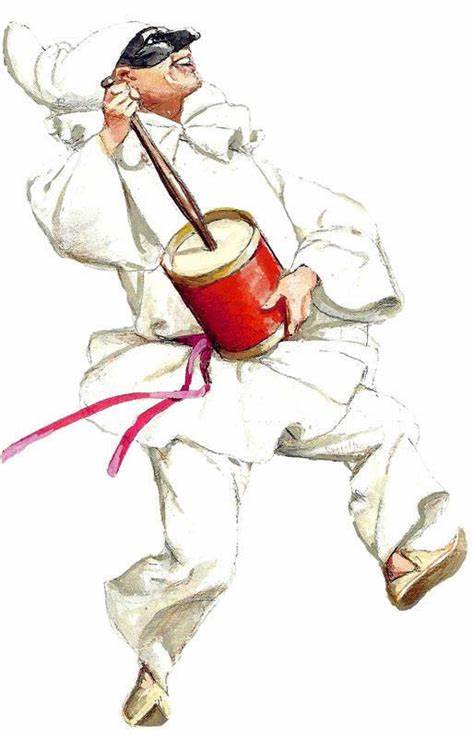Commedia dell’arte is a form of improvisational theatre that originated in Italy in the 16th century, designed to entertain people who could not afford tickets to the theatre. The first recorded performances of commedia dell’arte date back to Rome in 1551. It became popular across Europe between the 16th and 18th centuries.
These performances typically took place in public spaces, such as town squares or piazzas in city streets. Music, dance, witty dialogue, and trickery contributed to the comedic nature of the performance. There was no script; instead, the actors improvised their dialogue, which evolved based on the audience’s reactions.
The characters in commedia dell’arte often were stereotypes or stock characters, such as foolish old men, devious servants, or boastful military officers. These exaggerated “real” characters included figures like Il Dottore, a know-it-all doctor, and Pantalone, a greedy old man.
Commedia dell’arte was once known as “Italian comedy” and is also referred to as commedia alla maschera, commedia improvviso, or commedia dell’arte all’improvviso. A special feature of commedia is the lazzo—a joke or witty routine, often a pantomime, which was well known to performers. The character Arlecchino, now known as Harlequin, was particularly famous for this.
In commedia dell’arte, female roles were played by women, making them the first known professional actresses in Europe since antiquity.
Troupes of actors, known as compagnie, each had specific roles and skills. Many actors came from diverse backgrounds, often without formal theatre training. These companies traveled in large carts loaded with supplies for their performances, enabling them to maintain their nomadic lifestyle. This nomadism was partly driven by the need for new, paying audiences, and they often performed at public fairs and festivals, particularly in wealthier towns where financial success was more likely.
Companies would also be patronized by high-ranking officials, who would sponsor performances in exchange for a certain amount of time spent in their region. These troupes preferred not to stay too long in any one place to avoid the risk of their act becoming “stale.” Moving on while still popular ensured they would be remembered fondly and invited back.
The price of performances varied depending on the location, the length of stay, and local government regulations regarding dramatic performances.
Pulcinella: One of the Classic Character of Commedia dell’arte

Pulcinella, a classic character from the 17th century, became a stock figure in Neapolitan puppetry. Pulcinella embodies the Neapolitan working class—simple, yet clever. Though he faces many challenges, he always finds a way to overcome them with a smile, using his cunning to benefit the weak and outwit the powerful.
A defining trait of Pulcinella is his inability to keep quiet, which gave rise to the term “Pulcinella’s secret,” referring to an open secret that everyone knows. His repertoire includes movements, gestures, acrobatics, and dances rooted in Neapolitan culture, and he often carries accessories like a broom, horn, and cowbells—objects thought to ward off the evil eye and bad luck.
Pulcinella’s character is dualistic. He can act foolish while being aware of the situation, or he may pretend to be the most intelligent character on stage despite his ignorance. He tries to rise above his social status without working for it, constantly changing his behavior to suit the situation. Often portrayed as a servant, Pulcinella always aligns himself with the winner, though he only decides who that is after the fact. No matter the outcome, Pulcinella always manages to emerge victorious, often with minimal effort.
